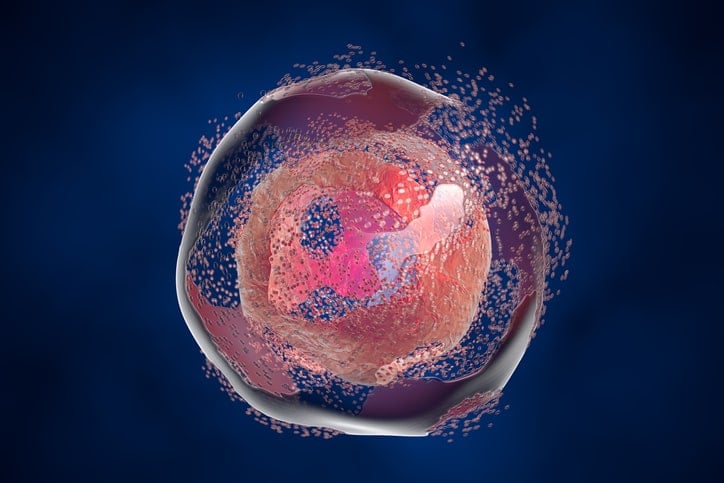Sonication Cell lysis protocol
Cell lysis is the disruption of the cellular membrane. In the laboratory this is usually done for the purpose of exposing the contents of the cell to purify and study them. When optimizing a cell lysis protocol it is important to make sure that the contents of the cell remain unharmed in the process. A buffer that can mimic the environment of the cell and the lysis method are important factors in the cell lysis protocol. A sonication cell lysis protocol is a commonly used method that involves exposing cells to frequencies of sound that can disrupt their membrane.
The sonication cell lysis protocol
- Get your cells into lysis buffer
- Centrifuge cells to pellet them (~5 minutes).
- Resuspend cells in a lysis buffer, usually containing PMSF (phenylmethylsulfonyl fluoride), a serine protease inhibitor which helps prevent the degradation of your exposed proteins.
- Chill the cell solution
- A common problem with mechanical or sonication cell lysis is the heat that is created with the method. It is crucial that you keep your sample cold throughout the process. Put the sample on an ice bath, keep the sample in the ice bath through the whole process. If the sonicator is in an enclosed space, you want to make sure your ice bath container fits into that space.
- Sonication
- Put the sonication probe inside the tube with the chilled resuspended cells. Make sure the bottom of the probe is fully submerged, but don’t let it touch the bottom of the tube. Be very careful, too much sonication can lead to visible foaming which indicates that proteins in solution are denaturing.
- There are a few considerations when setting up the sonication.
- The frequency is often set between 20 and 50 kHz, depending on how difficult it is to lyse the cell and the sensitivity of the contents you want to purify.
- The duration of sonication varies. Some will sonicate for 10 seconds, others for 30. This changes with sonicator models and laboratory protocols.
- The duration of intervals between sonication. It is important to let the sample cool down between sonication steps. This step also varies between being minutes long or just 30 seconds.
- Centrifugation
- The final step is centrifuging the cell debris that accumulated in solution during sonication. Centrifugation is done at 4 degrees, in a temperature controlled centrifuge. If you don’t have a temperature controlled centrifuge, you can try placing a centrifuge in a fridge if it is the correct size for such a fix. Usually centrifugation is done from 15-30 minutes.
Purification of desired biological elements
After your sonication cell lysis protocol, you will want to purify the parts of the cell that you are interested in. Whether you need to isolate organelles or proteins, an efficient and simple technique for this step is magnetic bead separation. Magnetic beads are available with the same coatings that are available for column affinity purifications, but have a more simple procedure to minimize errors and maximize yield. Modern separators also aid in this process and allow for optimal separation.
Related news





